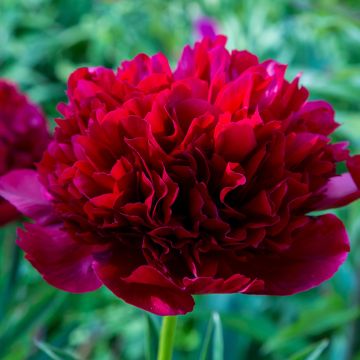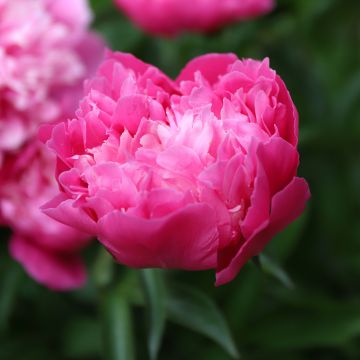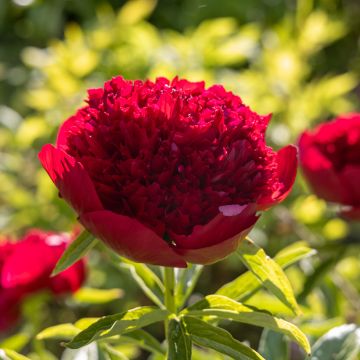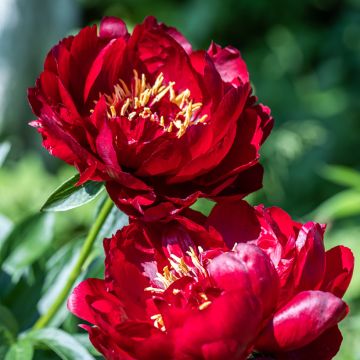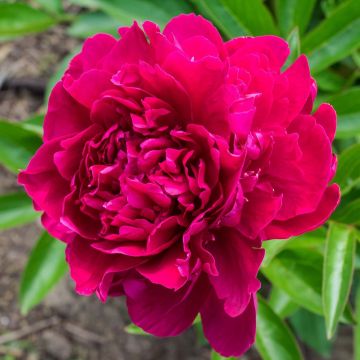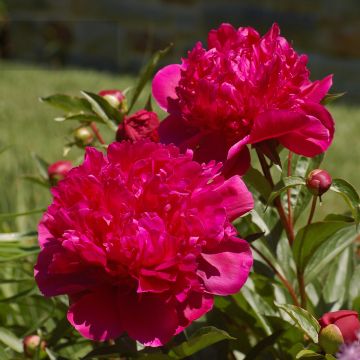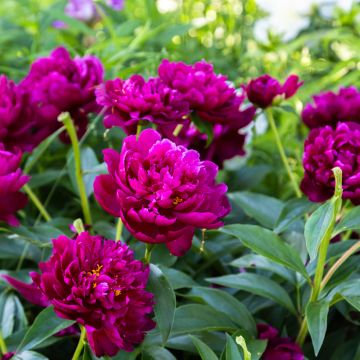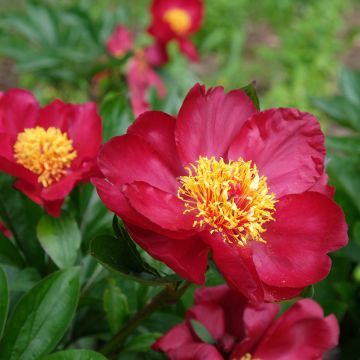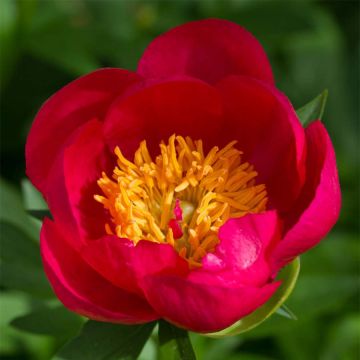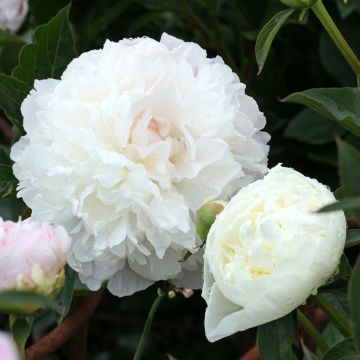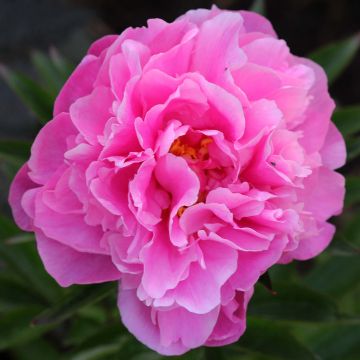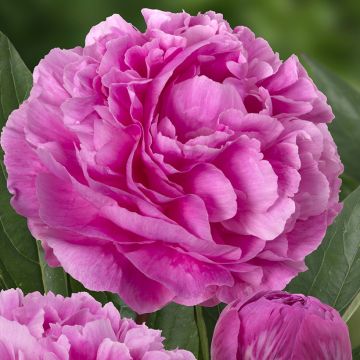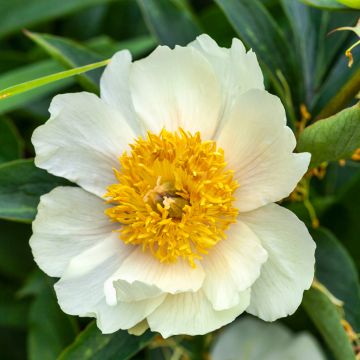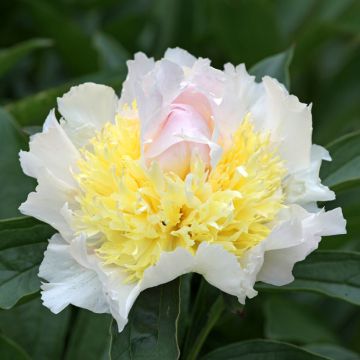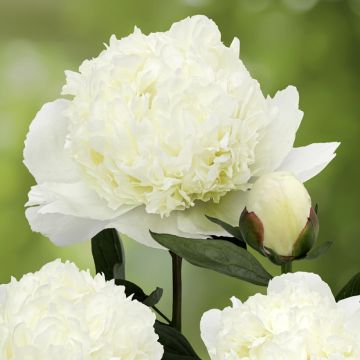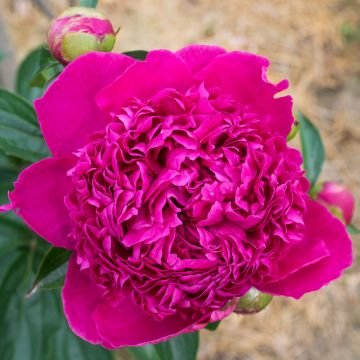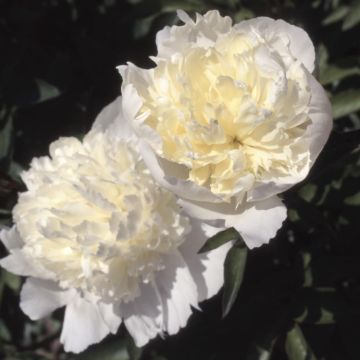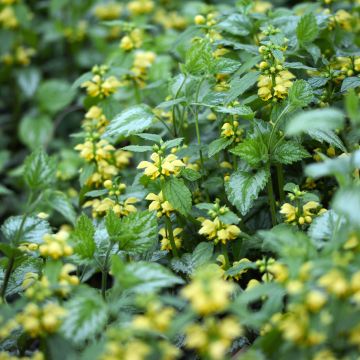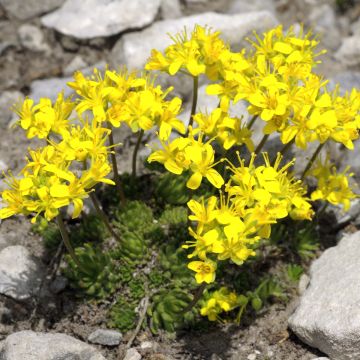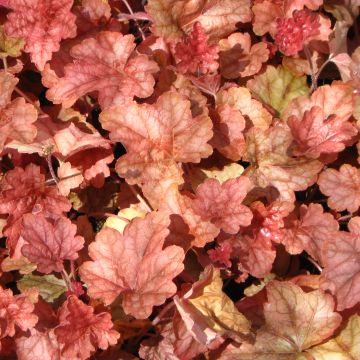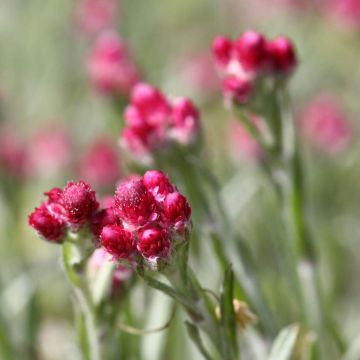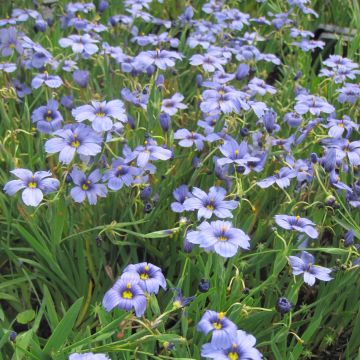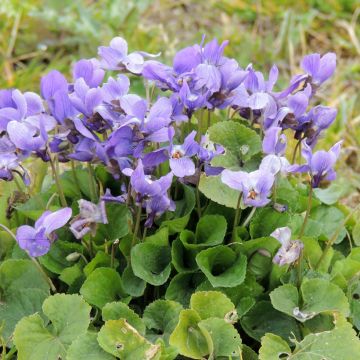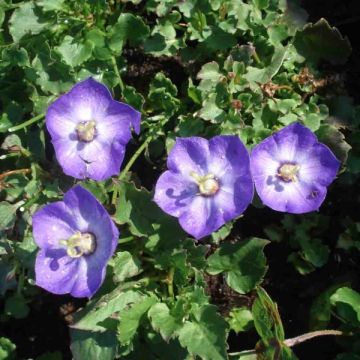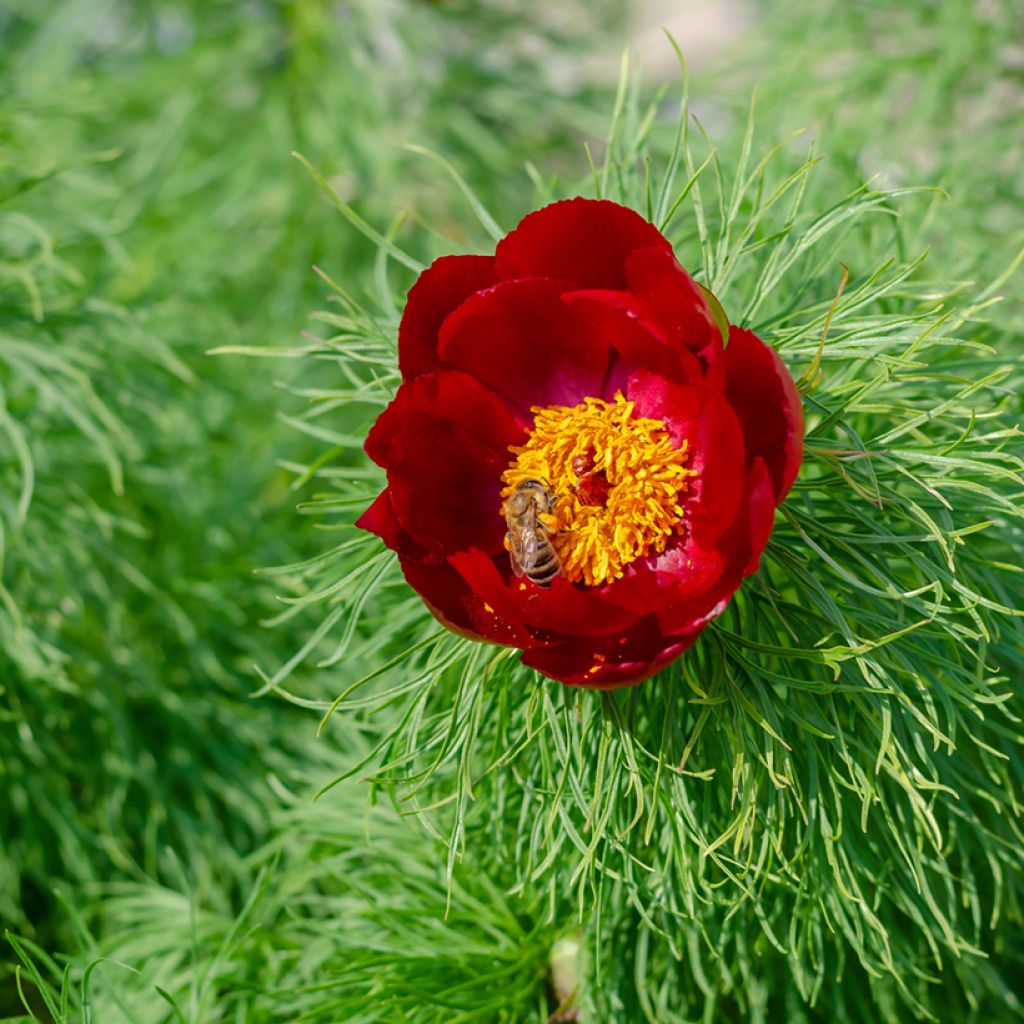

Paeonia tenuifolia
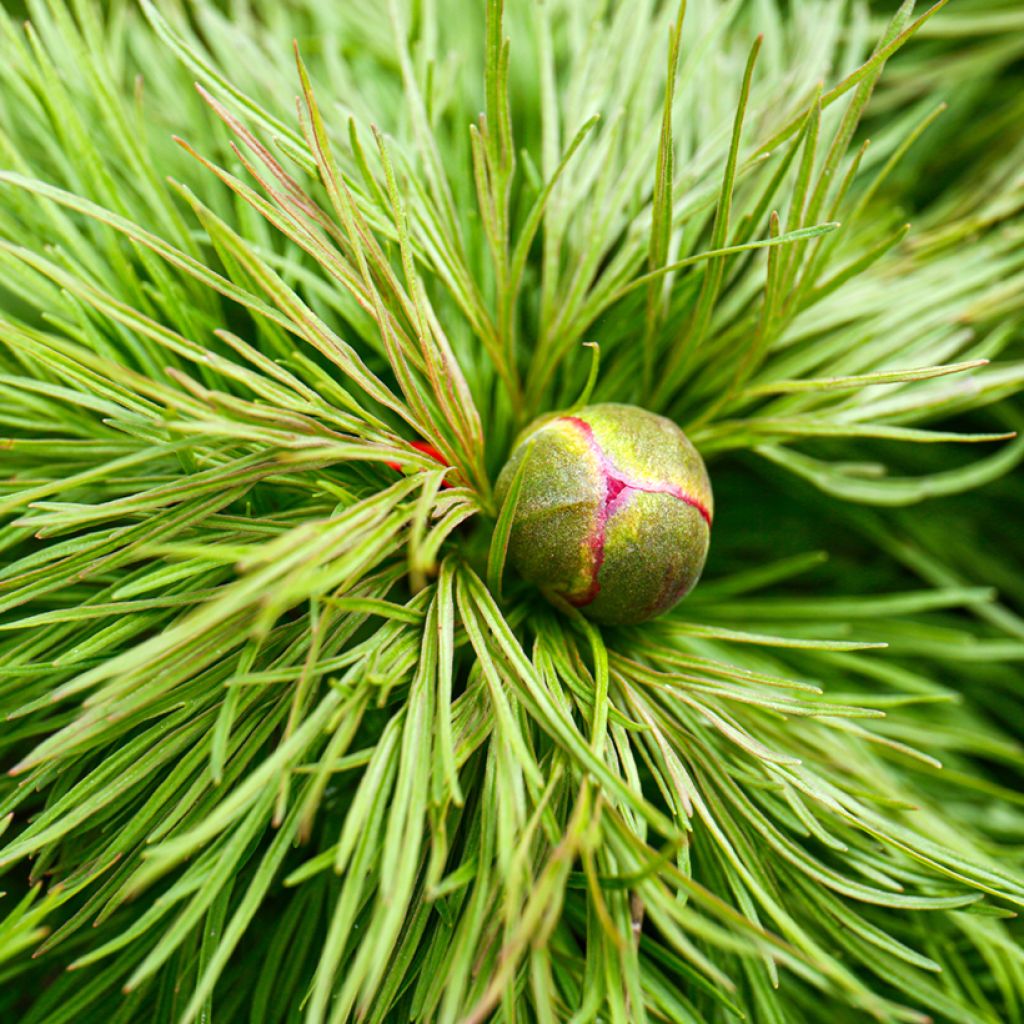

Paeonia tenuifolia
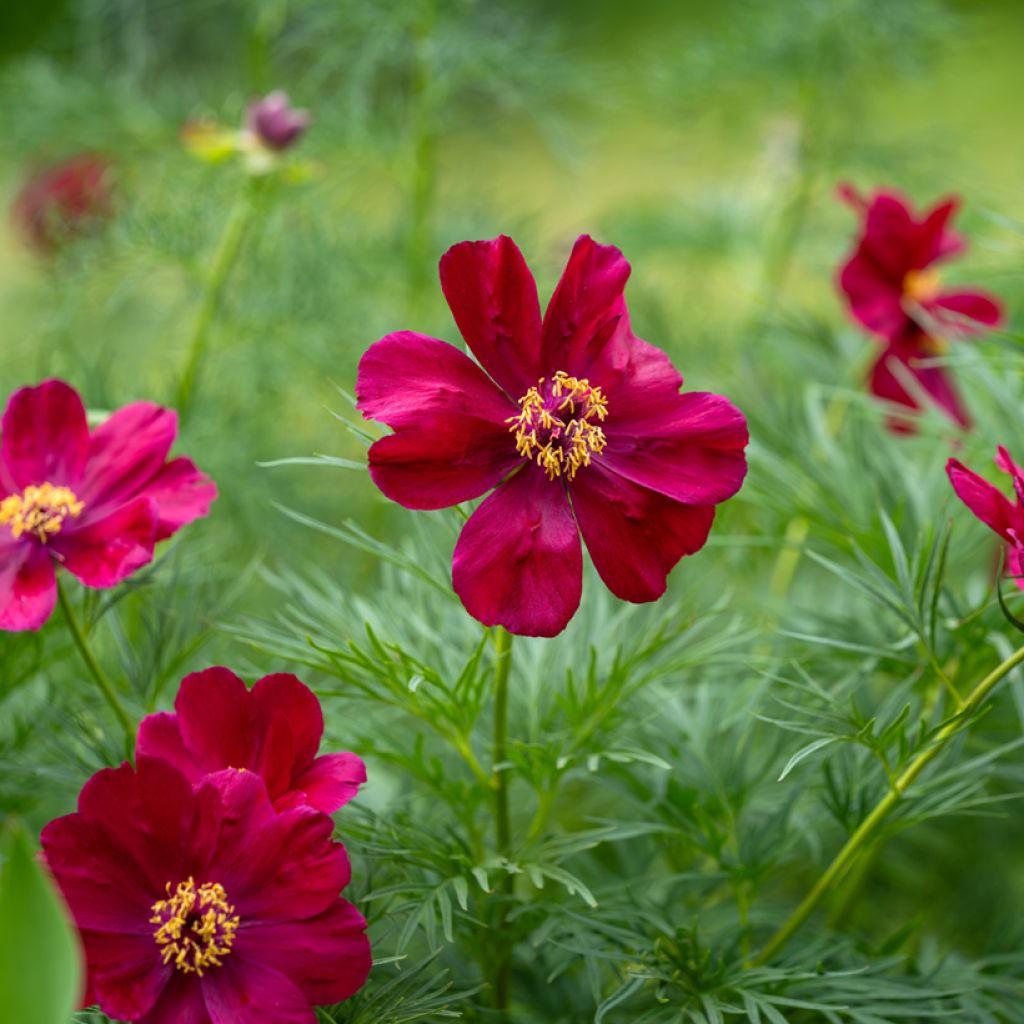

Paeonia tenuifolia
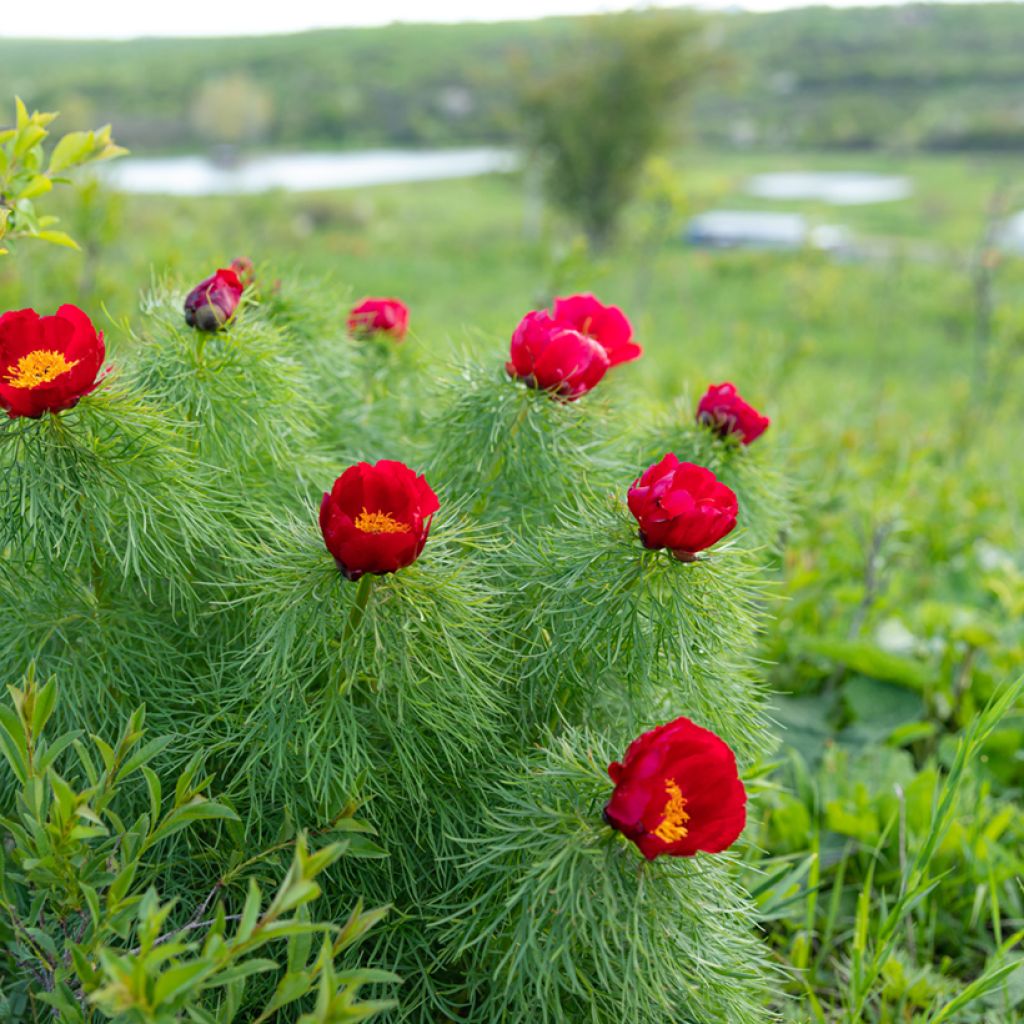

Paeonia tenuifolia
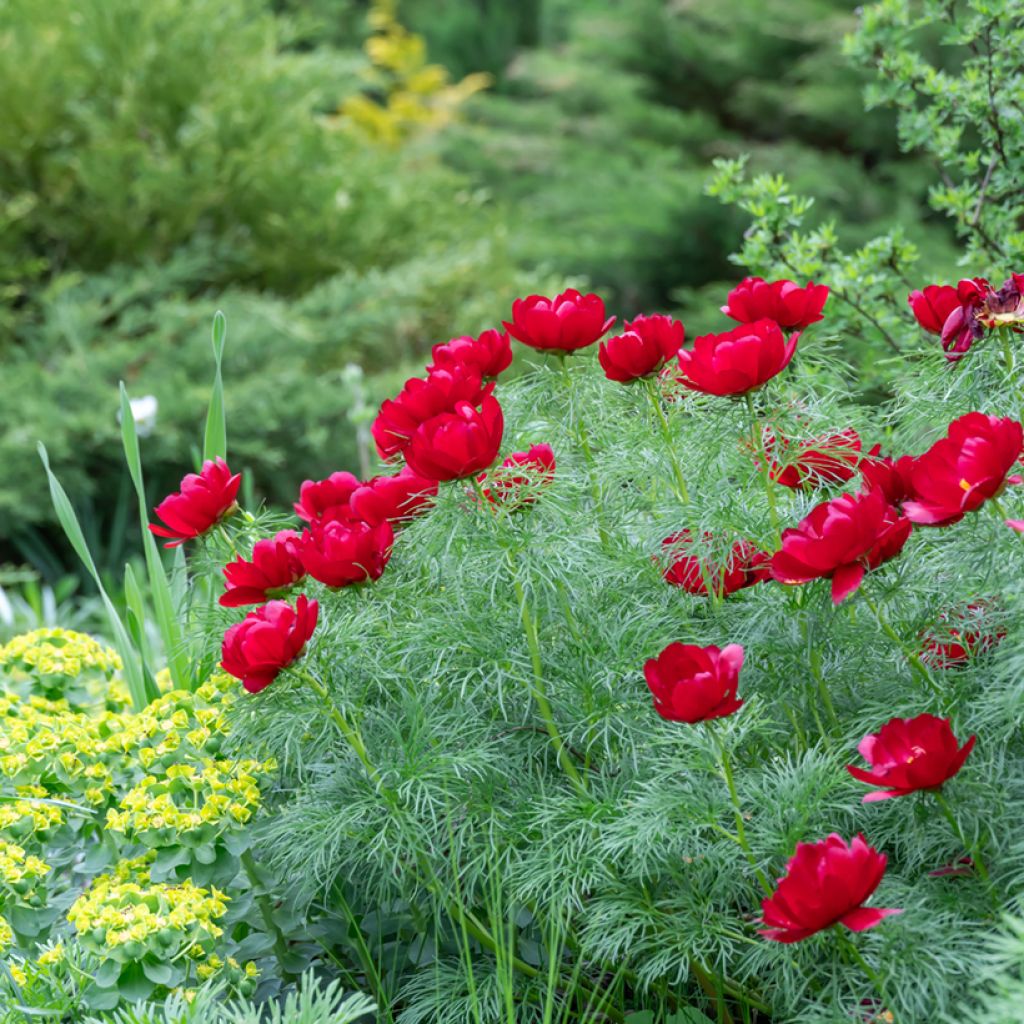

Paeonia tenuifolia
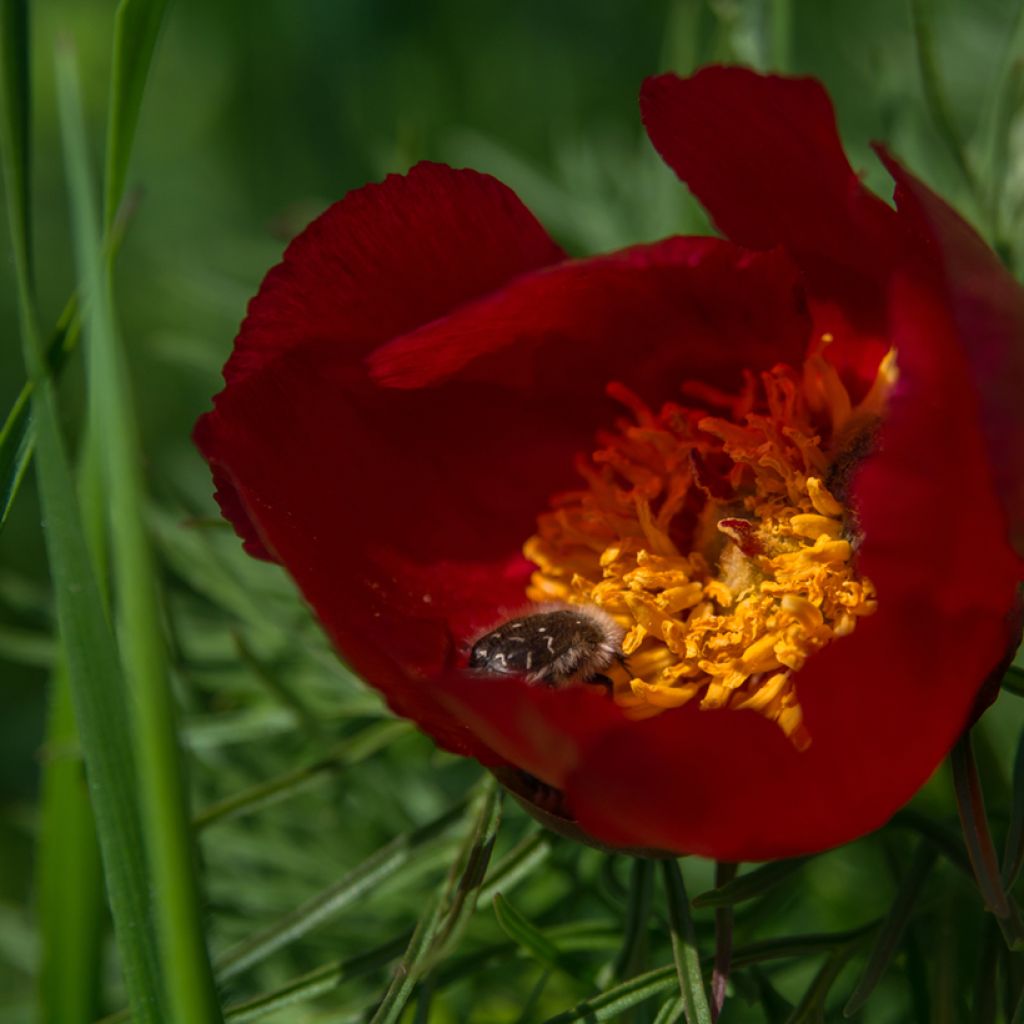

Paeonia tenuifolia
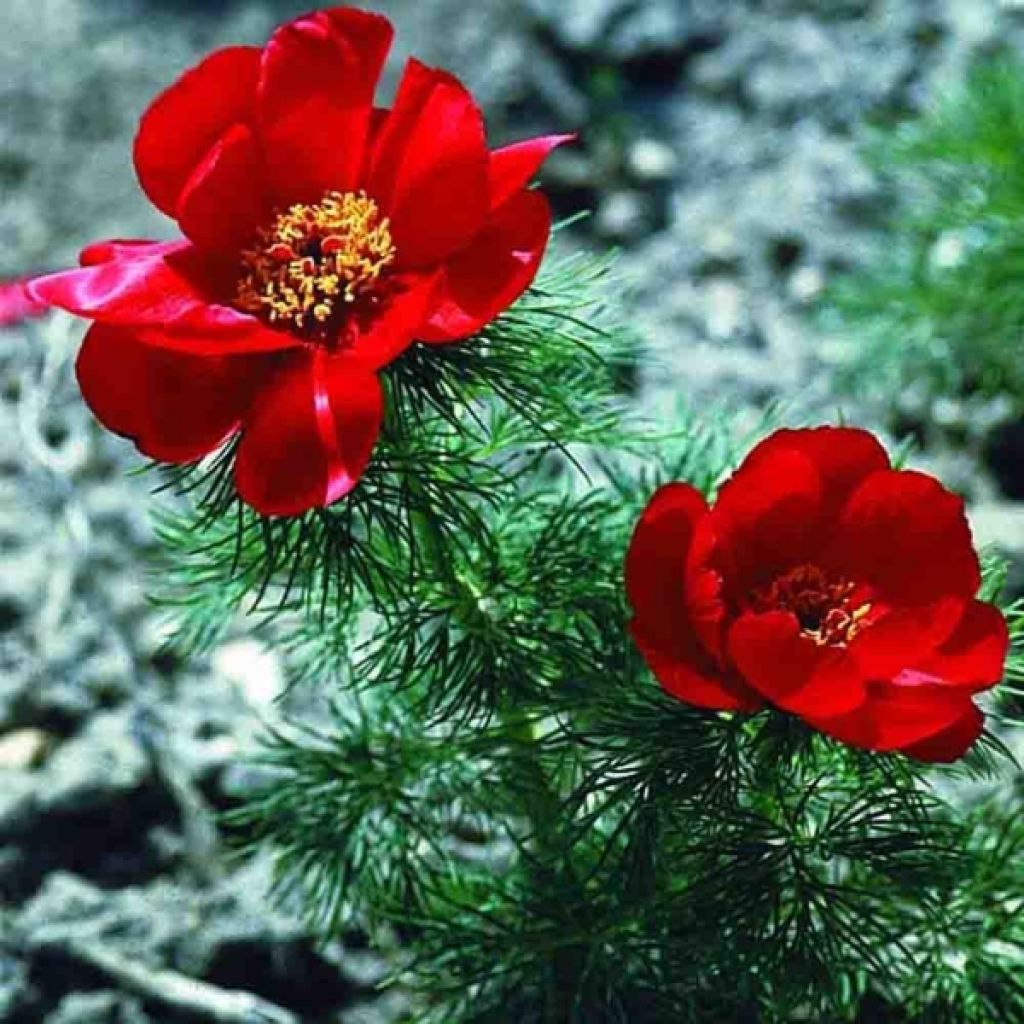

Paeonia tenuifolia
Paeonia tenuifolia
Paeonia tenuifolia
Pivoine herbacée, Pivoine à fines feuilles, Pivoine à feuilles de fougères
Why not try an alternative variety in stock?
View all →This plant carries a 12 months recovery warranty
More information
We guarantee the quality of our plants for a full growing cycle, and will replace at our expense any plant that fails to recover under normal climatic and planting conditions.
From €5.90 for pickup delivery and €6.90 for home delivery
Express home delivery from €8.90.
Does this plant fit my garden?
Set up your Plantfit profile →
Description
Paeonia tenuifolia, sometimes known as the Blood Drop Peony, is a somewhat mythical and rare botanical species in cultivation, always highly sought after by plant hunters. This herbaceous peony of great beauty, nicknamed "fern leaf peony" in the UK, boasts deciduous foliage with astonishing patterns, composed of thread-like segments, shining like green hair. In the heart of April, the very dense fennel-like foliage with its vibrant dark green truly enhances the globular cup-shaped flowers of scarlet red. Flowers that are all the more precious as they are very ephemeral. This plant goes dormant in summer, thus avoiding heat and drought.
Originating from the steppes of southeastern Central Europe, the Caucasus, and the Balkan Peninsula, Paeonia tenuifolia sometimes grows in immense colonies, dotting open meadows and limestone grasslands with its incredible blood-red flowering as early as April. This species is one of the earliest to flower in spring, taking advantage of the still moist soil to reproduce before going dormant during the hot and dry season that characterises these steppe regions. It is a perfectly hardy plant, capable of withstanding temperatures as low as -20°C and dry summers. It belongs to the family of Ranunculaceae or Paeoniaceae.
Its growth is slow during the first years, after which its stump grows year after year and can even become weakly suckering. The plant eventually forms a bushy clump of at least 40 cm (16in) in height and 50-60 cm (20-24in) in width. Very different from other peonies, it develops deciduous and dense foliage, composed of numerous leaflets cut into very fine and elongated segments, of intense green colour, shiny. Flowering begins around April 15th, more or less early depending on the climate. The solitary flowers measure 6 to 8 cm (2 to 3in) in diameter, they are globular, single, and seem to float above the foliage. They are of an intense red colour, iridescent and remarkably bright. The centre of the flower is adorned with beautiful golden-yellow stamens surrounding a red and cut pistil.
Paeonia tenuifolia adapts to most climates, but shows a preference for those with well-marked seasons and for calcareous and well-drained soils. It will thrive in raised beds, cool rockeries, or the edge of beds, preferably alone or in the company of small plants such as the pumila iris of limestone scrublands, botanical tulips and narcissus, muscari, moss phlox, allium karataviense, or Omphalodes. Its combination with small blue countryside flowers such as certain annual delphiniums, Amur river pinks, Brunnera, Anchusa, perennial flax, bellflowers, or even Veronica prostrata is truly beautiful.
Report an error about the product description
Paeonia tenuifolia in pictures






Flowering
Foliage
Plant habit
Botanical data
Paeonia
tenuifolia
Ranunculaceae
Pivoine herbacée, Pivoine à fines feuilles, Pivoine à feuilles de fougères
Central Europe
Other Herbaceous and hybrid Peonies
Planting and care
Like all peonies, Paeonia tenuifolia does not like to be moved so you have to think carefully about the right place to locate it. The best time to plant is in spring or autumn. Give the stumps a sunny or bright location and deep, well-loosened soil, making sure it is properly drained. Peonies need space and dislike competition from other species. Prepare a hole of 50 x 50 x 50 cm (20in), adding a thin layer of sand or gravel at the bottom to drain the roots. Mix an organic fertiliser into your soil, partially backfill, place your plants inside and cover with 6 cm (2in) of soil above the eyes. After planting, tamp down and water thoroughly. Once established, this peony completely dispenses with watering in summer in most regions, as it goes into dormancy. That said, in hot and particularly dry climates in summer, abundant watering every 15 days will be appreciated.
Planting period
Intended location
Care
-
, onOrder confirmed
Reply from on Promesse de fleurs
Ground cover perennials
Haven't found what you were looking for?
Hardiness is the lowest winter temperature a plant can endure without suffering serious damage or even dying. However, hardiness is affected by location (a sheltered area, such as a patio), protection (winter cover) and soil type (hardiness is improved by well-drained soil).

Photo Sharing Terms & Conditions
In order to encourage gardeners to interact and share their experiences, Promesse de fleurs offers various media enabling content to be uploaded onto its Site - in particular via the ‘Photo sharing’ module.
The User agrees to refrain from:
- Posting any content that is illegal, prejudicial, insulting, racist, inciteful to hatred, revisionist, contrary to public decency, that infringes on privacy or on the privacy rights of third parties, in particular the publicity rights of persons and goods, intellectual property rights, or the right to privacy.
- Submitting content on behalf of a third party;
- Impersonate the identity of a third party and/or publish any personal information about a third party;
In general, the User undertakes to refrain from any unethical behaviour.
All Content (in particular text, comments, files, images, photos, videos, creative works, etc.), which may be subject to property or intellectual property rights, image or other private rights, shall remain the property of the User, subject to the limited rights granted by the terms of the licence granted by Promesse de fleurs as stated below. Users are at liberty to publish or not to publish such Content on the Site, notably via the ‘Photo Sharing’ facility, and accept that this Content shall be made public and freely accessible, notably on the Internet.
Users further acknowledge, undertake to have ,and guarantee that they hold all necessary rights and permissions to publish such material on the Site, in particular with regard to the legislation in force pertaining to any privacy, property, intellectual property, image, or contractual rights, or rights of any other nature. By publishing such Content on the Site, Users acknowledge accepting full liability as publishers of the Content within the meaning of the law, and grant Promesse de fleurs, free of charge, an inclusive, worldwide licence for the said Content for the entire duration of its publication, including all reproduction, representation, up/downloading, displaying, performing, transmission, and storage rights.
Users also grant permission for their name to be linked to the Content and accept that this link may not always be made available.
By engaging in posting material, Users consent to their Content becoming automatically accessible on the Internet, in particular on other sites and/or blogs and/or web pages of the Promesse de fleurs site, including in particular social pages and the Promesse de fleurs catalogue.
Users may secure the removal of entrusted content free of charge by issuing a simple request via our contact form.
The flowering period indicated on our website applies to countries and regions located in USDA zone 8 (France, the United Kingdom, Ireland, the Netherlands, etc.)
It will vary according to where you live:
- In zones 9 to 10 (Italy, Spain, Greece, etc.), flowering will occur about 2 to 4 weeks earlier.
- In zones 6 to 7 (Germany, Poland, Slovenia, and lower mountainous regions), flowering will be delayed by 2 to 3 weeks.
- In zone 5 (Central Europe, Scandinavia), blooming will be delayed by 3 to 5 weeks.
In temperate climates, pruning of spring-flowering shrubs (forsythia, spireas, etc.) should be done just after flowering.
Pruning of summer-flowering shrubs (Indian Lilac, Perovskia, etc.) can be done in winter or spring.
In cold regions as well as with frost-sensitive plants, avoid pruning too early when severe frosts may still occur.
The planting period indicated on our website applies to countries and regions located in USDA zone 8 (France, United Kingdom, Ireland, Netherlands).
It will vary according to where you live:
- In Mediterranean zones (Marseille, Madrid, Milan, etc.), autumn and winter are the best planting periods.
- In continental zones (Strasbourg, Munich, Vienna, etc.), delay planting by 2 to 3 weeks in spring and bring it forward by 2 to 4 weeks in autumn.
- In mountainous regions (the Alps, Pyrenees, Carpathians, etc.), it is best to plant in late spring (May-June) or late summer (August-September).
The harvesting period indicated on our website applies to countries and regions in USDA zone 8 (France, England, Ireland, the Netherlands).
In colder areas (Scandinavia, Poland, Austria...) fruit and vegetable harvests are likely to be delayed by 3-4 weeks.
In warmer areas (Italy, Spain, Greece, etc.), harvesting will probably take place earlier, depending on weather conditions.
The sowing periods indicated on our website apply to countries and regions within USDA Zone 8 (France, UK, Ireland, Netherlands).
In colder areas (Scandinavia, Poland, Austria...), delay any outdoor sowing by 3-4 weeks, or sow under glass.
In warmer climes (Italy, Spain, Greece, etc.), bring outdoor sowing forward by a few weeks.

































